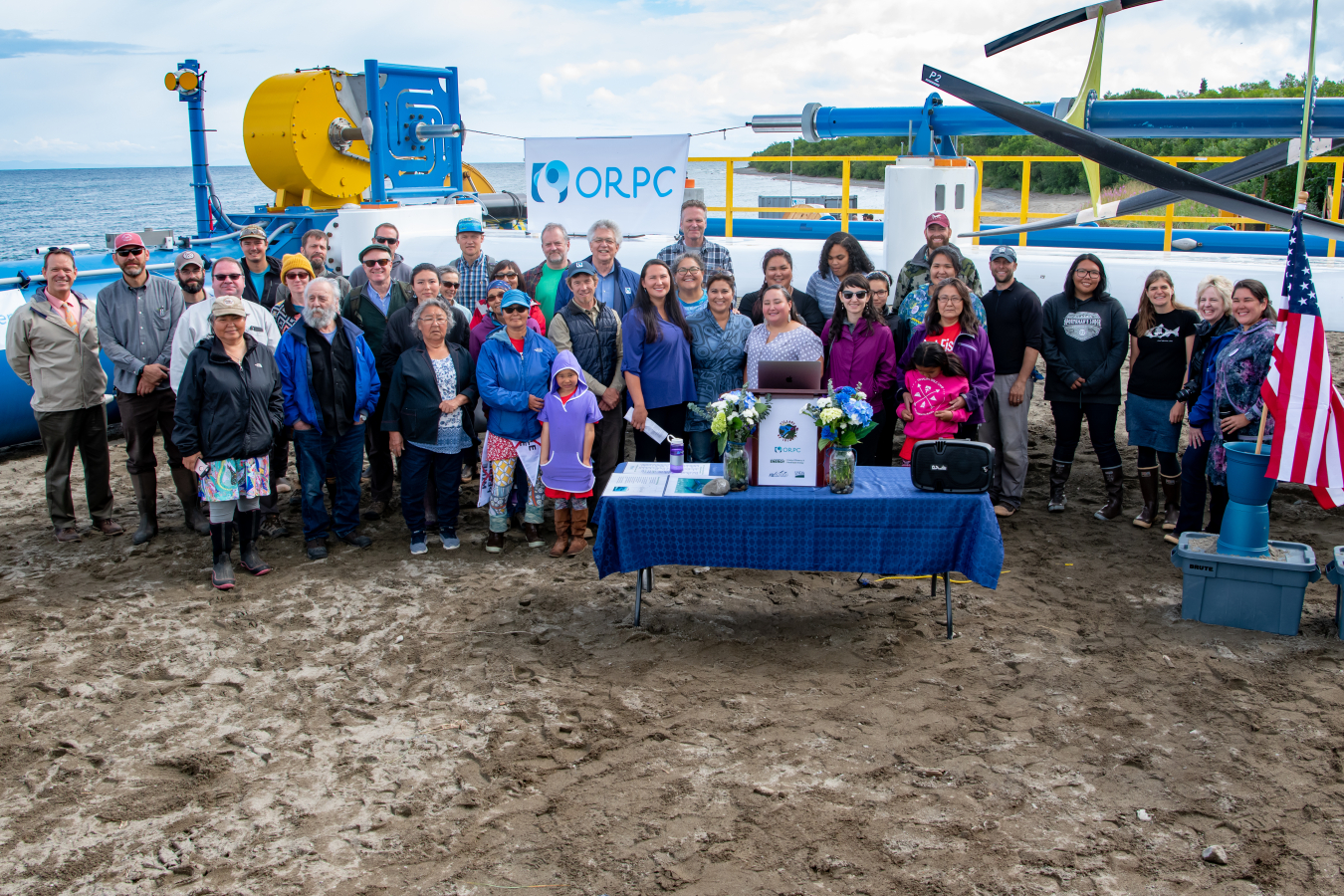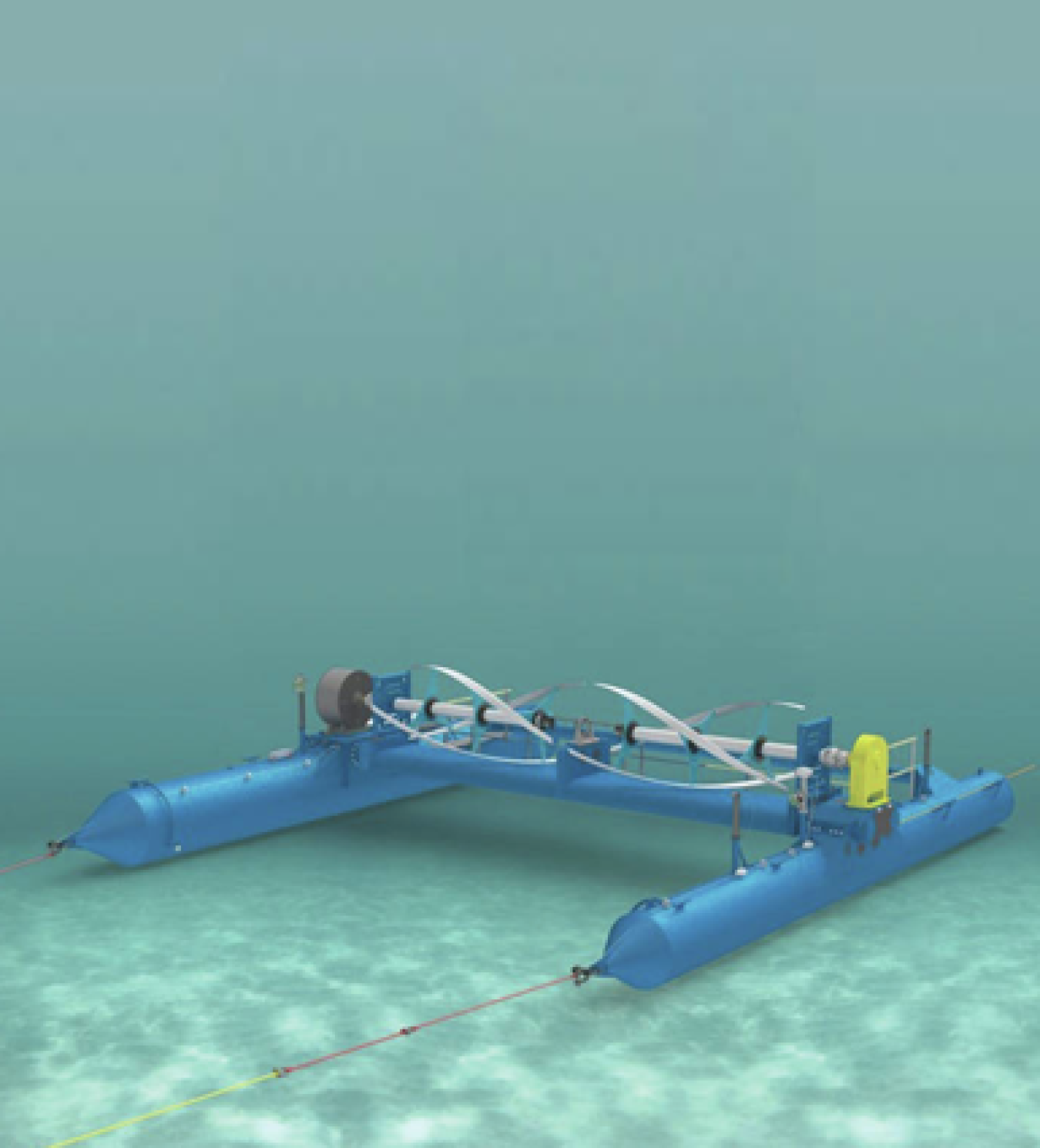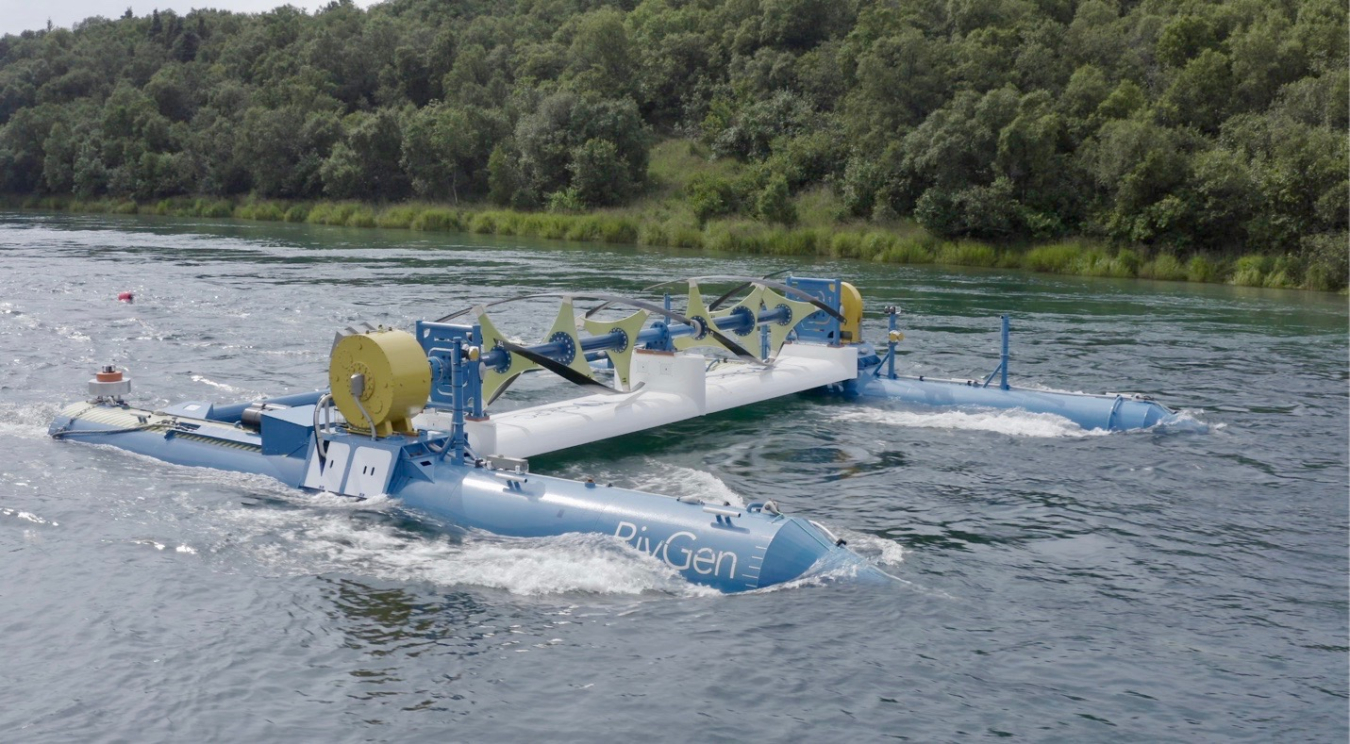Project could establish a model for similar small, independent communities.
Water Power Technologies Office
August 8, 2019
RivGen® Power System Celebration including representatives of DOE, Alaska Senator Lisa Murkowski's office, First Alaskans Institute, Alaska Governor Mike Dunleavy, and ORPC CEO Chris Sauer. Credit: Austin McDaniel, Governor Dunleavy’s Office
In June 2019, the tiny southwestern Alaska village of Igiugig became the first U.S. tribal entity to receive a Federal Energy Regulatory Commission permit for a water-powered project not connected to a dam. A month later, on July 16, Igiugig Village launched a unique, 35-kilowatt water power system that will transform the mighty Kvichak River into a renewable energy source that could provide up to half of the community’s electricity and greatly reduce its dependency on costly diesel fuel.
The groundbreaking Igiugig Hydrokinetic Project, supported by EERE's Water Power Technologies Office (WPTO), is a collaboration between Igiugig Village and ORPC, which deployed its RivGen® Power System, a submerged cross-flow river current turbine system.
The project faced several challenges before the July launch, not the least of which was the fast-moving Kvichak River itself, which is home to the largest wild sockeye salmon run in the world. ORPC designed the power system device specifically for this location, keeping the salmon in mind. Prototype studies in 2014 and 2015 observed adult salmon interactions within the vicinity of an operating turbine and showed no impact to the fish. The final version was modified for easier installation and maintenance in the river’s currents.

RivGen Power System installed on the Kvichak River riverbed. The rushing current moves the device’s twin turbines, which generate electric power that is transferred via cable to the Igiugig Village microgrid. Credit: ORPC
The launch marked the beginning of a trial year that will further study whether the system has any impact the young salmon migrating to the ocean, and whether the device will be affected by icy winter conditions. After confirming system and component compatibility and evaluating the microgrid configuration, the project team hopes to establish the Igiugig Hydrokinetic Project as the first long-term system of its kind in this location.
“This project will benefit the domestic hydrokinetic industry by increasing knowledge of marine energy systems, the interaction of underwater turbines with salmon, and how hydrokinetic systems contribute to providing stable power for local microgrids,” said Steve DeWitt, WPTO Technology Manager. “I believe that what we are doing here in Igiugig is a model for what can happen throughout Alaska and Canada in similar small, independent communities.”
DeWitt explained that WPTO provides funding for early-market marine energy systems in rivers that do not require the installation of structures that impede the flow of the river or impact the environment. These systems are well-suited for the river environments of Alaska where residents, like those of Igiugig Village, are interested in systems that do not impact the local fish population.
AlexAnna Salmon, Igiugig Village Council President, stated during the launch ceremony that the project represents a centerpiece of the community’s long-term economic and environmental vision, sustainably fits with the local river’s salmon resource, and addresses occurrences such as seasonal ice impacts in the Kvichak River.

The ORPC RivGen Power System prior to installation on the Kvichak River in Igiugig, Alaska. The device is 51.5 feet long, 46.9 feet wide, and 11.5 feet tall. Credit: ORPC
“This project is particularly attractive to Igiugig, because it reduces the risk of diesel fuel spills that endanger their salmon fisheries,” DeWitt said. “It is also a very important project for the Energy Department’s Water Power Technologies Office’s marine energy program because we anticipate learning a lot about some important issues to our industry—such as advancing devices in fast-moving rivers, deploying systems in remote communities with limited infrastructure, and operating power electronics in a microgrid environment.”
In addition, the project will be demonstrating to other communities that are potentially interested in similar systems that marine energy systems can be environmentally friendly and can operate continuously throughout the year.
Plans are underway for installation of a second RivGen device in conjunction with smart microgrid electronics and energy storage. When completed, the system will reduce Igiugig Village diesel use by 90 percent.

